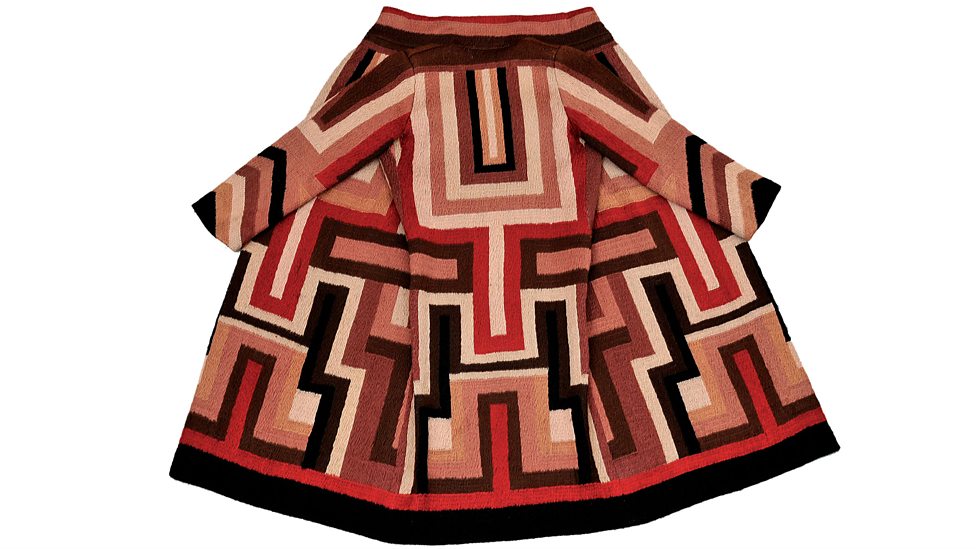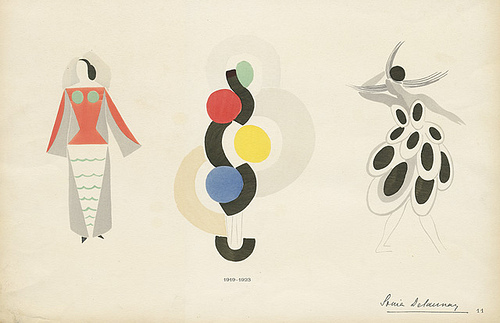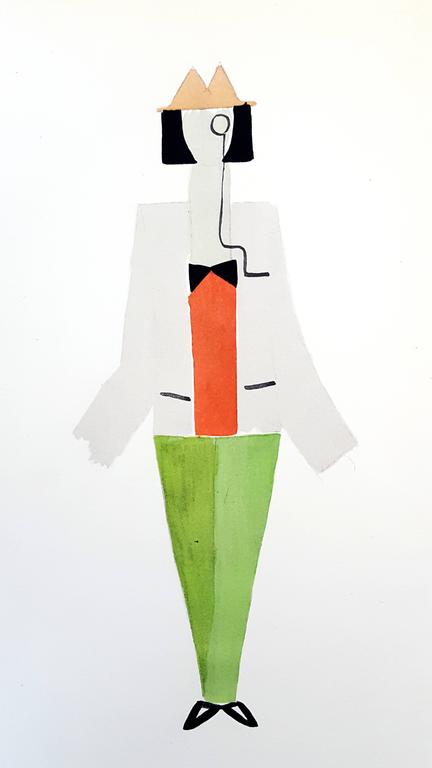FEMALE STUDY: SONIA DELAUNAY'S FORGOTTEN FAME
This Thanksgiving we went to the Toledo Museum while visiting my in-laws. To my surprise, the museum is a treasure trove. Every corner I turned, I was like, “WOW, this is so rare!” “OMG it’s a so and so.” “WOW, I’ve never seen an X in real life,” etc.
The best part of the museum was that there were many artists that are hard to find information on the internet about. I’ve only vaguely known of Sonia Delaunay, mostly from my tumblr obsession, but at the museum, there was an entire wall dedicated to her costume design sketches, which are fantastic.
Sonia Delaunay was born Sarah Stern on November 14, 1885 in Gradizhsk, Ukraine. She was adopted in 1890 by her maternal uncle, Henri Trek, a lawyer in St. Petersburg, where she grew up. Her uncle and his wife exposed Sonia to music and art, and she was taught several foreign languages. When she left her birth family, Sarah Stern changed her name to Sonia Trek.
In 1905 she moved to Paris to attend Académie de La Palette in Montparnasse. She and her husband, artist Robert Delaunay, co-founded the Orphist Movement, an arm of the Cubist movement focused on geometric shapes and bright colors used to make abstractions of reality. Delaunay was extremely prolific, working as a painter, as well as a designer of textiles, costumes, furniture, wall coverings, and eventually she even started her own fashion line.
I don’t normally focus much on artist’s lives, but Sonia Delaunay wins for the big feminist moves she pulled, so her story is worth telling!
To start, Delaunay was the very first female to have a retrospective show at the Lourve in 1964 a few years before her death (hell yes to recognition while being alive)! Her first marriage is also a great story, because she married a German gallery owner in Paris to escape her birth parent’s disapproval of her artistic career and to stay in France; meanwhile, her husband used their marriage to conceal his homosexuality. (Big feminist move again). With the help of her first husband, she was introduced into the Paris art world, where she met her second husband Robert Delaunay.
Robert and Sonia were quick lovers and conceived a child before marriage in 1910 (I can’t help how much I keep saying it, but again, hello she had sex before marriage in 1910 because she gave 0 fucks about social norms). After the two were married and their son Charles was born, Sonia made a quilt for the baby. The quilt was inadvertently her first Orphist piece, but interestingly, the quilt was actually inspired by her Ukrainian roots. Regarding the origins of Orphism, Delaunay stated:
About 1911 I had the idea of making for my son, who had just been born, a blanket composed of bits of fabric like those I had seen in the houses of Ukrainian peasants. When it was finished, the arrangement of the pieces of material seemed to me to evoke cubist conceptions and we then tried to apply the same process to other objects and paintings.
Prior to this quilt, Delaunay was paining in a post-impressionistic style that was en vogue in Paris at the time. But once she made her first Cubist-esque piece, her style shifted. I have to say, I do not have a taste for Cubism, but Delaunay’s distinct version is beautiful and more akin to later Bauhaus graphic work, than to traditional Cubism.
From here, Sonia explored other media, including wall coverings and textiles, which seem like a very linear extension of her paintings.
At the Toledo Museum, most of their lithographs were of her fashion designs, which I recognized but couldn’t figure out how. After reading the captions, I realized I was mistaking her work for costumes from the Bauhaus ballet, but I had to have been mistaken because Sonia’s work preceded the Bauhaus school. The thing that drives me crazy about her is how little she is recognized for her work (even with the retrospective in the 60s). Like most female designers, the impact of her work is brushed aside and men from the Bauhaus school get all the credit, when really, they were taking from a strong female designer and merely adding to it!
Just like the Bauhaus, many of Delaunay’s fashion designs of course weren’t executable, but there are hundreds of Orphic style drawings and paintings she made. Bauhaus was halted by WWII, but Delaunay worked prior to WWI.
At the start of WWI, Delanuay moved to Spain, and later, Portugal, which earned her husband criticism for being a “French deserter.” Until this point in her life, Sonia had been receiving financial support from her adopted parents, but when the Russian Revolution began in 1917, the funds were cut off. Financially motivated, Sonia started making costumes for Sergei Diaghilev plays in Spain. (Robert began making sets for Diaghilev at this time as well). Sonia’s costumes gained recognition, which led to her being commissioned to decorate the interior of a night club. This inspired Sonia to open Casa Sonia in Bilbao, which sold both interior decor and fashion starting at the end of 1917.
In 1922, the couple and their son returned to Paris, where they initially found it difficult to get work due to their “desertion” during the war. At first, Sonia maintained her career solely as a costumer until she made a name for herself in Paris again, which led to her starting a new fashion label, Simultané, making clothing for private customers in 1924. During this time, Sonia still made costumes for plays and films, but dressed many celebrities and well known Parisians through the 20s into the great depression.
Once the depression hit, business declined, so she again focused on painting with her husband. The two worked mostly on conceptual designs, remaining all the while in their own genre of Orphism. But as the depression waned, so did Sonia’s husband’s health, eventually leading to his death in 1941.
As a widow, Sonia continued to work on her paintings, becoming a board member for the Salon des Réalités Nouvelles, which was an association for abstract artists that held annual exhibitions. Because her work maintained relevance through the technicolor 1950s and 60s, Sonia enjoyed fame through the end of her life, even being invited to paint a custom car for the French company, Matra on their 530 model in 1968.
Likewise, as her work from the 1920s came back into vogue in the 1970s, Sonia revisited several textile and home furnishing designs, creating a book of her work in 1976. I absolutely NEED to get my hands on this book! I found a cool photo of Sonia sifting through her work prior to the book’s publication, so yes, please check her out in all her old lady bad ass glory:
It’s very rare that female artists get as much recognition in their lifetime as Sonia Delaunay did, but maybe it’s because much of her commercial work was with textiles and fashion, a place where women are allowed. It does blow my mind that her work proceeded the Bauhaus school and I’ve NEVER read any comparisons, citations or even a quick mention of her name when talking about Schlemmer’s costumes, but I guess even a woman with a retrospective in the Lourve can’t have it all quite yet. (If you’re curious to see the link between her work and theirs, I wrote an article about Bauhaus costume design several years ago, which can be read here). It seems strange that someone who enjoyed success in their lifetime, and even some venerable accolades, would be so easily forgotten, but at least I’m here to set the record straight. Hello history: Sonia Delaunay did it first.
COURTNEY BAGTAZO, ©2019

























